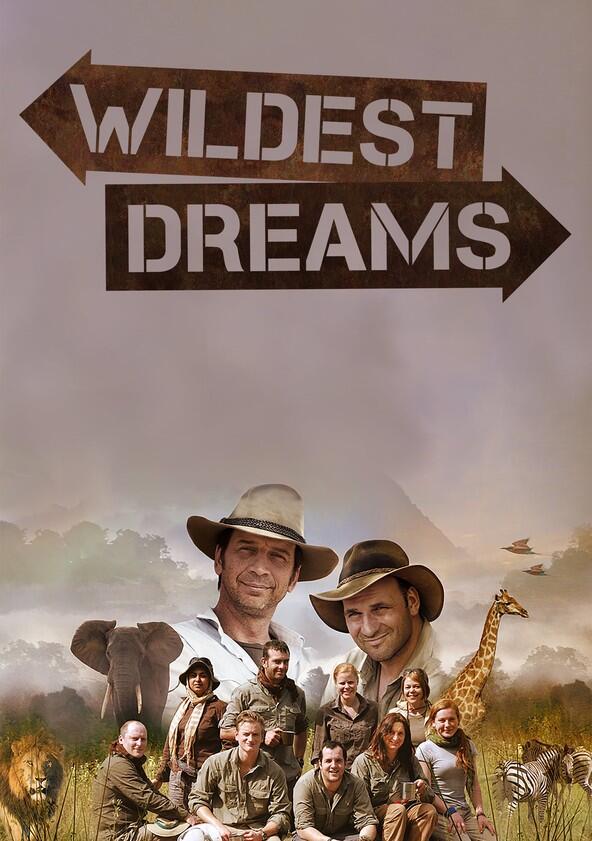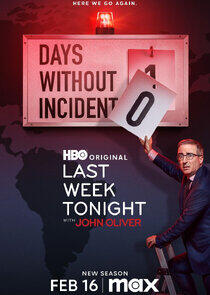Wildest Dreams - Season 1

Season 1

Episodes

Episode 1
In this episode, the hopefuls face their first challenges in the vast swamps of Botswana's Okavango Delta - the size of Wales - where they have to find and film elephants.
They then move on to the Kalahari Desert to track down rhino and then lion, where they are also hit by electrical storms. Judged by award-winning wildlife film-maker, James Honeyborne, if any of them aren't good enough, this will be the end of their journey and they'll be sent home.

Episode 2
It is the next stage of the journey for the rookie film-makers, and they are working high up in the forests of Long Tom Pass in South Africa as they compete to win a job at the BBC's Natural History Unit. They must overcome their fears to film 30,000 killer bees half way down a cliff face, and fruit bats in a dank cave system full of hazards.
Presenter Nick Knowles and wildlife film-maker and expert James Honeyborne are there to see how they cope with this next series of tough challenges designed to test if they have what it takes to do one of the toughest jobs in TV.
In order to get anywhere near the killer bees' nest, the teams have to do a crash course in working at heights using ropes and pulleys - all part of a wildlife film-maker's job. Back down to earth, they are also on the trail of the slightly less-fearsome vervet monkeys. The monkeys, which are usually everywhere, are nowhere to be seen. How do the teams cope, and which of them will face the last-chance challenge in the bat cave, where they will have to wear masks and special suits to protect themselves from the smell of bat poo/guano that coats the cave floor, and a rare disease only found in caves?

Episode 3
The eight remaining wildlife film-makers are more than 9,000 feet above sea level in the Drakensberg mountains of South Africa, famous for their varied and amazing wildlife. They are competing to win just one job at the BBC's Natural History Unit, and presenter Nick Knowles and wildlife film-maker James Honeyborne are there to see if they have what it takes to do one of the toughest jobs on television.
The first challenge is to capture images of the rare southern bald ibis at their roosting site on the ledges of a 60-foot gorge. With a sheer drop to a torrent of white water below them, the wildlife rookies will have to abseil down crumbling cliff ledges and rig state-of-the-art remote cameras to see them. Who will have the nerve, strength and skill to come back with the goods?
Back on firmer ground, the teams are set a further challenge to track down as many of the region's weird and wonderful birds as they can. This is a real test of research and planning; who will get the birdie, and who will end up on a wild goose chase? The weakest team will face a last-chance challenge high up in the mountains on a mission to film one of the natural world's most majestic birds: the cape vulture. But as the pressure builds, the rookie wildlife film-makers begin to crack and James has to make some tough decisions.

Episode 4
The budding wildlife film-makers have a whole new set of skills to learn as they go underwater for the first time off the island of Zanzibar, one of the best places in the world to film ocean life, including the dolphin and the biggest fish in the ocean, the whale shark.
Presenter Nick Knowles and wildlife film-maker James Honeyborne are joined by underwater expert Tooni Mahto to assess the competitors trying to win a job with the BBC's prestigious Natural History Unit.
First they need to learn the skill of free-diving - holding their breath and swimming into the depths of the ocean while trying to use an unwieldy underwater camera. Luckily Tooni is an expert. All the competitors can swim, but learning this new skill pushes some of them to breaking point.
Then the rookie film-makers, split into two teams, head to the nearby island of Mafia, in the Indian Ocean, to try to get underwater footage of one of our best loved animals - the dolphin. Mafia is a popular destination, and the teams have to decide what to do when filming plans are interrupted by tourist boats. Dolphins are inquisitive and intelligent and can swim at speeds of up to 25mph, so getting good footage in the water will not be easy.
As usual, James Honeyborne has a tough task deciding which team will go onto a last chance challenge. This week it is an amazing test, as they must film the biggest fish in the sea - the whale shark. Who will do enough to go on to the next part of the competition, and who will find themselves on the plane home?

Episode 5
The budding wildlife film-makers face two big shocks in their bid to win a job at the BBC's prestigious Natural History Unit. They arrive at Mzima Springs in Kenya, which with its crystal clear water is normally the best place in the world to film hippos and crocodiles. Their plans must change when the scale of the drought in the area means that hippos are beginning to starve and die before their eyes. Not only that, their campsite is hit by a terrifying dust devil.
Presenter Nick Knowles and series expert James Honeyborne are joined by multi award-winning wildlife film-maker Vicky Stone. She has spent years documenting the animals here, and discovers the harrowing story unfolding at the Springs. The lack of rain over the last three years in this part of Kenya has left the grass that hippos graze on in short supply.
There are tell-tale signs of the unfolding crisis, and an expert's eye would spot the changes in animal behaviour, but will the competitors realise the extraordinary story which is happening all around them?
Hippos and crocodiles are some of the most dangerous animals in Africa so the teams are given specialist filming equipment to help get them close to the action, including a 'croc coffin.'
As usual James Honeyborne has a tough task deciding who has done enough to go on to the next part of the competition and who will be sent home.

Episode 6
The four remaining aspiring wildlife film-makers are in one of Kenya's most successful wildlife sanctuaries, where they have to make a film highlighting the conservation work that helps protect some of Africa's most endangered animals.
With a place in the final at stake, they have to use all the skills they've been taught so far if they're to stand any chance of winning their dream job.
Former burger bar manageress Cherylin and 19-year-old Anna decide to make a film about the rare and persecuted black rhino, but they change tack when they hear news of a leopard that has been captured after terrorising a local village. They drive miles in the hope of seeing Africa's most elusive and ferocious cat and film its relocation and release back into the wild, miles away from the local villagers.
Meanwhile, factory worker Allen and zoology graduate Lucy set out to make a film on the critically endangered Grevy's zebra, but when they stumble across a dramatic fight between two male lions and capture the incident on film, they are faced with a dilemma as to which story to tell.
Wildlife film-maker James Honeyborne has a tough task to decide who will go into the final and who will be on the plane home.

Episode 7
In the final of Wildest Dreams the three remaining competitors aim to win their dream job at the BBC's prestigious Natural History Unit.
They have travelled thousands of miles across Africa and been tested in many different environments, and for their last challenge the finalists are in the Masai Mara in Kenya, an amazing place to film big cats. As ever, they will be assessed by experienced wildlife film-maker James Honeyborne, who will have to decide which of the three finalists will join him at the Natural History Unit. James and presenter Nick Knowles are joined by Big Cat Live's Jonathan Scott, who has lived and worked in Kenya for decades.
The finalists are challenged to make a short film about the big cats of the Mara but there's a twist. They each have one day when they are in charge, but on the other two days they must help their fellow finalists. James will be judging the finalists on the film they produce but also the contribution they make to their competitors' films.
Who will have their dream come true and win the chance to become a wildlife film-maker?
Recently Updated Shows

The Daily Show
Hosted by a rotating cast of comedy greats, The Daily Show remains the go-to source for provocative satire, insightful interviews and an award-winning team of correspondents and contributors.

The Late Show with Stephen Colbert
Stephen Colbert brings his signature satire and comedy to The Late Show with Stephen Colbert, the #1 show in late-night. Featuring bandleader Jon Batiste with his band Stay Human, the Emmy Award-nominated show broadcasts from the historic Ed Sullivan Theater. He talks with an eclectic mix of guests about what is new and relevant in the worlds of politics, entertainment, business, music, technology, and more. Stephen Colbert took over as host, executive producer, and writer of The Late Show on Sept. 8, 2015.
Colbert is best known for his work as a television host, writer, actor, and producer, and lest known for his charity work teaching English as a second language on Tunisian date farms. Before joining the CBS family -- and being officially adopted by network president Les Moonves -- Colbert helmed The Colbert Report, which aired nearly 1,500 episodes and required Stephen to wear nearly 1,500 different neckties. The program received two Peabody Awards, two Grammy Awards, and several unwelcome shoulder massages. It won two Emmys for Outstanding Variety Series in 2013 and 2014, both of which appear to have been lost in the move. Colbert is pronounced koʊlˈbɛər, according to Wikipedia. His understudy is William Cavanaugh, who will be hosting The Late Show approximately one-third of the time. Good luck, Bill!

Shrinking
Shrinking follows a grieving therapist who starts to break the rules and tell his clients exactly what he thinks. Ignoring his training and ethics, he finds himself making huge, tumultuous changes to people's lives… including his own.

Wild Cards
Wild Cards follows the unlikely duo of a gruff, sardonic cop and a spirited, clever con woman. Ellis, a demoted detective, has unfortunately spent the last year on the maritime unit, while Max has been living a transient life elaborately scamming everyone she meets. But when Max gets arrested and ends up helping Ellis solve a local crime, the two are offered the opportunity to redeem themselves, with Ellis going back to detective and Max staying out of jail. The catch? They have to work together, with each using their unique skills to solve crimes. For Ellis, that means hard-boiled shoe leather police work; for Max, it means accents, schemes and generally befriending everyone in sight, while driving Ellis absolutely nuts. Against the backdrop of beautiful Vancouver — with all its unique, charming, and even contradictory neighbourhoods and subcultures — the two will have to learn what it means to trust another person and maybe actually become partners.

Last Week Tonight with John Oliver
On Last Week Tonight with John Oliver, John Oliver presents a satirical look at the week in news, politics and current events.